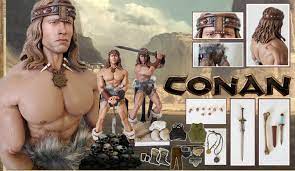To protect the wearer, the same reason all other armor was created. For European medieval plate armor, 2 factors led to its creations:
- More powerful longbows and crossbows created a need for more powerful armor than mail
- Advances in technology made it easier to make plate armor out of iron and steel
Plate armor typically provides better protection for the areas it covers. It is very hard to cut or punch through a plate of bronze or iron.
In the case of European medieval plate armor, it was created because increasingly more powerful longbows and crossbows could penetrate mail, the previous form of armor used, and better protection was needed than mail alone. In addition, the use of two-handed pole weapons created a need for better armor.
Also, plate armor could be more easily made with advances in metallurgy and water-powered hammers. Mail was labor-intensive, while water-powered hammers and larger iron blooms reduced the labor to make plate armor.
How thick is metal plate armor?
There are a few problems with what you’re planning to do:
- Plate armor tended not to be one thickness all over. Instead, it was generally thicker at the points where it was more likely to be struck and thinner (and therefore lighter) at less vulnerable points. So, a cuisse plate on the thigh would be slightly thicker at the front than inside the leg.
- Thickness was not only the way plate armor protected you. Armor was also “case hardened,” which made the outer surfaces stronger and more resistant.
(3) A major part of ballistic plates worked was based on deflection rather than simple thickness or resistance. So, a piece of armor was designed to deflect a blade or point away from more vulnerable areas (visor eye holes, armpits, the groin) and to make the attack skid off altogether.
This means that simply hitting a uniformly thick, hard, unshaped piece of flat steel will not tell you much about armor. But to answer your question, the field plate would have ranged from about 1.5-3 mm thickness depending on where on the harness it was.
What are the differences in types of modern body armor?
There are some general categories of body armor: soft, hard, and knife.
Soft armor has many layers of fabric with very high tensile strength. Kevlar and aramid are two examples of this type of fabric. They are usually delivered as soft patches of a thick, somewhat rubber-like material that can be either put into a vest or sewn into clothing.
It can stop fairly slow bullets, like pistol rounds, simply by making it impossible for the bullet to go through and enter the user’s body.
Two things should be noted with soft armor:
- Since the armor is soft, much energy will still go through, although spread over an area. Depending on the bullet type, it will still hurt and leave a bruise.
- While the fabric has high tensile strength, it is still fairly sensitive to cutting and piercing damage. A knife might be able to get through or at least severely damage the protective properties of the vest.
Hard armor uses one of two methods to stop bullets.
Ceramic armor has, as the name implies, a fairly thick layer of ceramics, usually silicate carbide. It can stop faster bullets, such as rifle bullets, by dispersing the impact energy through the very hard but brittle ceramic material. So much energy is transferred through the vest, but it hopefully will not pierce it.
Military bulletproof vest has the advantage that it is a bit lighter and, depending to design, can be highly effective at stopping powerful rounds. The downside is that the plate is compromised once the ceramic layer has been damaged and must be changed as soon as possible.
Another downside of ceramic armor is that it is sensitive to some chemicals and has a shelf life, so the plate needs to be changed after a few years.
The other option for hard armor is Ballistic Plates; as the name suggests, it is a steel plate. The steel is usually very hard steel used in the bucket on those big digging machines they use at construction sites.



















